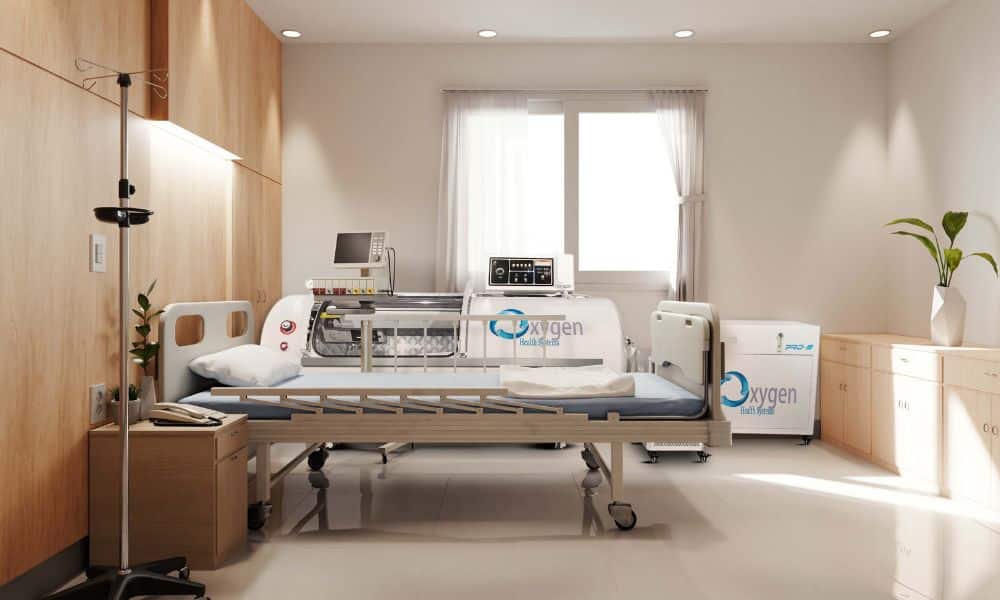Health
The Role of Hyperbaric Oxygen Therapy in Injury Recovery
One of the most popular uses for hyperbaric oxygen therapy (HBOT) is as a treatment modality for injuries. Many factors can complicate injury recovery, such as the development of complications like infections that impede progress. Explore the role of hyperbaric oxygen therapy in injury recovery to understand the far-reaching positive effects of higher oxygen levels in the bloodstream.
Accelerating Wound Healing
HBOT promotes tissue repair and improves wound closure by increasing the oxygen levels in the bloodstream. The elevated oxygen concentration in the blood enhances the body’s natural healing processes, allowing wounds to heal more quickly and effectively. Prompt healing minimizes scarring, promotes tissue regeneration, and helps efficiently restore normal function to the affected area.
During HBOT sessions, patients breathe oxygen in a pressurized chamber to increase blood oxygen levels. The circulatory system delivers this oxygen-rich blood to the injured tissues, providing them with the essential nutrients and energy needed for accelerated healing.
Reducing Inflammation and Pain
Inflammation is the body’s natural response to damage or infection; it is characterized by redness, swelling, heat, and pain in the affected area. However, excessive or prolonged inflammation can hinder the healing process and cause significant pain. By minimizing swelling and inflammation, HBOT helps alleviate pain and discomfort associated with various injuries.
When the body’s tissues receive an abundant supply of oxygen, they function more efficiently, leading to a decrease in pain. This pain relief allows patients to engage in rehabilitation exercises more comfortably, enhancing their recovery progress.
Fighting Infection
Injuries, particularly those involving open wounds, are susceptible to infections that can complicate the healing process. Hyperbaric oxygen therapy has proven to be a valuable adjunct in the fight against infection. The high oxygen levels achieved during HBOT sessions can neutralize the toxins of certain bacteria, making it more difficult for them to thrive and spread.
Furthermore, HBOT enhances the effectiveness of certain antibiotics by increasing their penetration into the infected tissues. The combination of increased oxygen levels and antibiotic therapy can lead to more rapid clearance of infections, reducing the risk of complications and promoting faster recovery. This is particularly beneficial for patients with chronic or hard-to-treat infections that have not responded well to conventional treatments.
Stimulating the Growth of New Blood Vessels
Adequate blood supply is essential for proper wound healing and tissue regeneration. Hyperbaric oxygen therapy can stimulate the growth of new blood vessels. Newly formed blood vessels improve blood circulation to the injured area, ensuring the tissues receive the oxygen and nutrients necessary for optimal healing.
Enhanced blood flow also helps remove waste products and toxins from the affected site, further supporting the recovery process. The stimulation of angiogenesis through HBOT can be particularly beneficial for patients with chronic wounds or injuries that have a compromised blood supply.
Hyperbaric oxygen therapy can improve injury recovery by accelerating wound healing, reducing inflammation, fighting infection, and stimulating the growth of new blood vessels. Hyperbaric oxygen therapy chambers come with different atmospheric pressures, measured in atmospheres absolute (ATA), where a higher ATA number indicates a greater pressure level within the chamber. Have more comfortable therapy sessions in a 1.5 ATA hyperbaric chamber equipped with an air conditioner, a dehumidifier, and an ionizer. Shop with Hyperbaric Pro today for faster wound healing and less pain.

